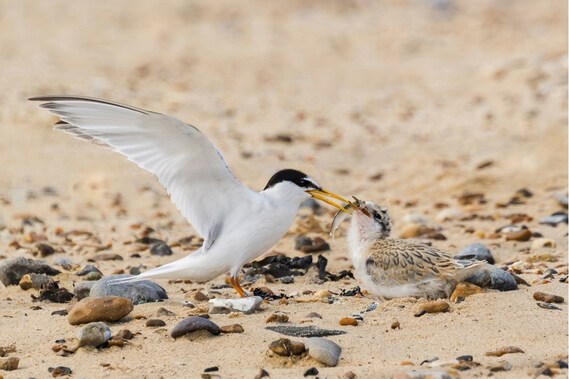|
Blog by Kieren Alexander, Site Manager for RSPB Old Hall Marshes Work will shortly commence on an exciting project at Horsey Island in Essex to secure and enhance the most important little tern colony in Essex. Using sand and shingle materials from the major channel deepening conducted by Harwich Haven. Funded by the EU Life+ project and the Environment Agency and with a major contribution from Harwich Haven Authority. This project aims to secure the future of the most important little tern colony in Essex, ensuring that it is secure from climate change and sea level rise for the next 50 years. Horsey Island is a private island in the north of Essex, it was first recharged in the 1990’s using sand and shingle from a previous deepening operation conducted by Harwich Haven Authority. More recently it has evolved into the most important little tern colony in Essex, ably wardened by the Ranger employed by Tendring District Council. Its unique offshore location means that it is relatively free of disturbance from people and mammalian predators this has allowed little terns to thrive and develop a productive colony. However, over time the beach has moved westward and landwards and gradually flattened out. This has meant the beach is increasingly vulnerable to high tide events especially over the breeding season. This means that to ensure that we can continue to provide habitat for little terns we need to recharge the recharge. Drone footage of the beach at Horsey Island, taken before the recharge operation. Credit: RSPB & Jim Pullen This is done by dredging sand and shingle then transporting it to the island, it is then deposited either via blowing it out over the bow or connecting a pipe and pumping it directly on to the foreshore. This is then moved around by the wind and tides until it settles on the existing beach raising the beach. This type of scheme is also known as a beneficial reuse scheme.
Not only will this project secure the future of the little tern colony, but it will also help to reduce erosion of saltmarsh, also a valuable and protected habitat. It will also maintain Horsey’s role as a wave break in the embayment, absorbing wave energy and helping to maintain the socio and economic and recreational opportunities this wonderful part of the Essex coast supports. The work is due to commence on or around the 30th of September and will last approximately a month. We will be updating the blog during the operation to track progress.
1 Comment
7/3/2022 09:00:03
Shaping the coast for wildlife:-
Reply
Leave a Reply. |
Archives
April 2024
Categories
All
Photo credits: Oystercatcher by Katie Nethercoat (rspb-images.com)
LOTE Logo credits: Saskia Wischnewski |


